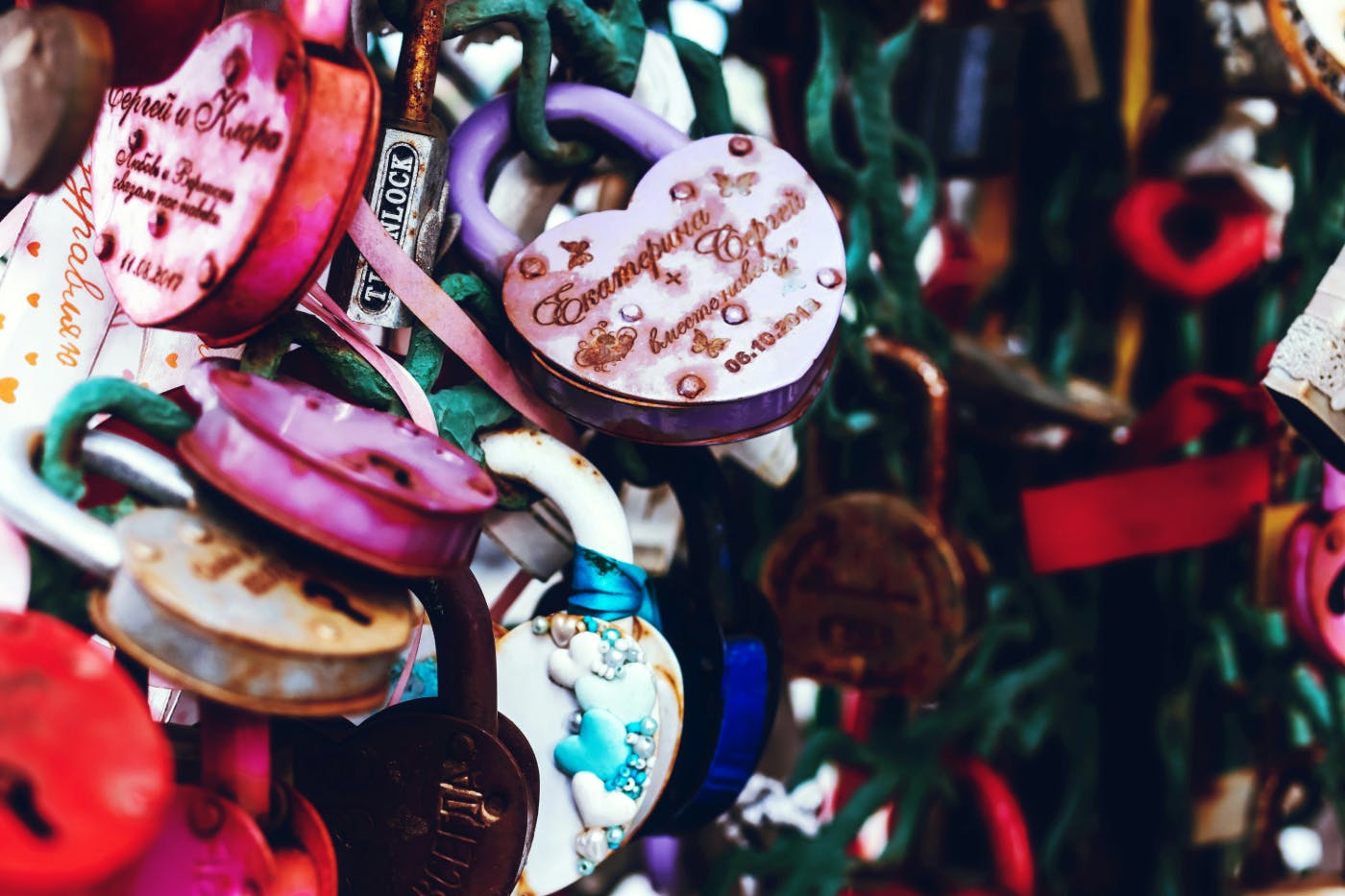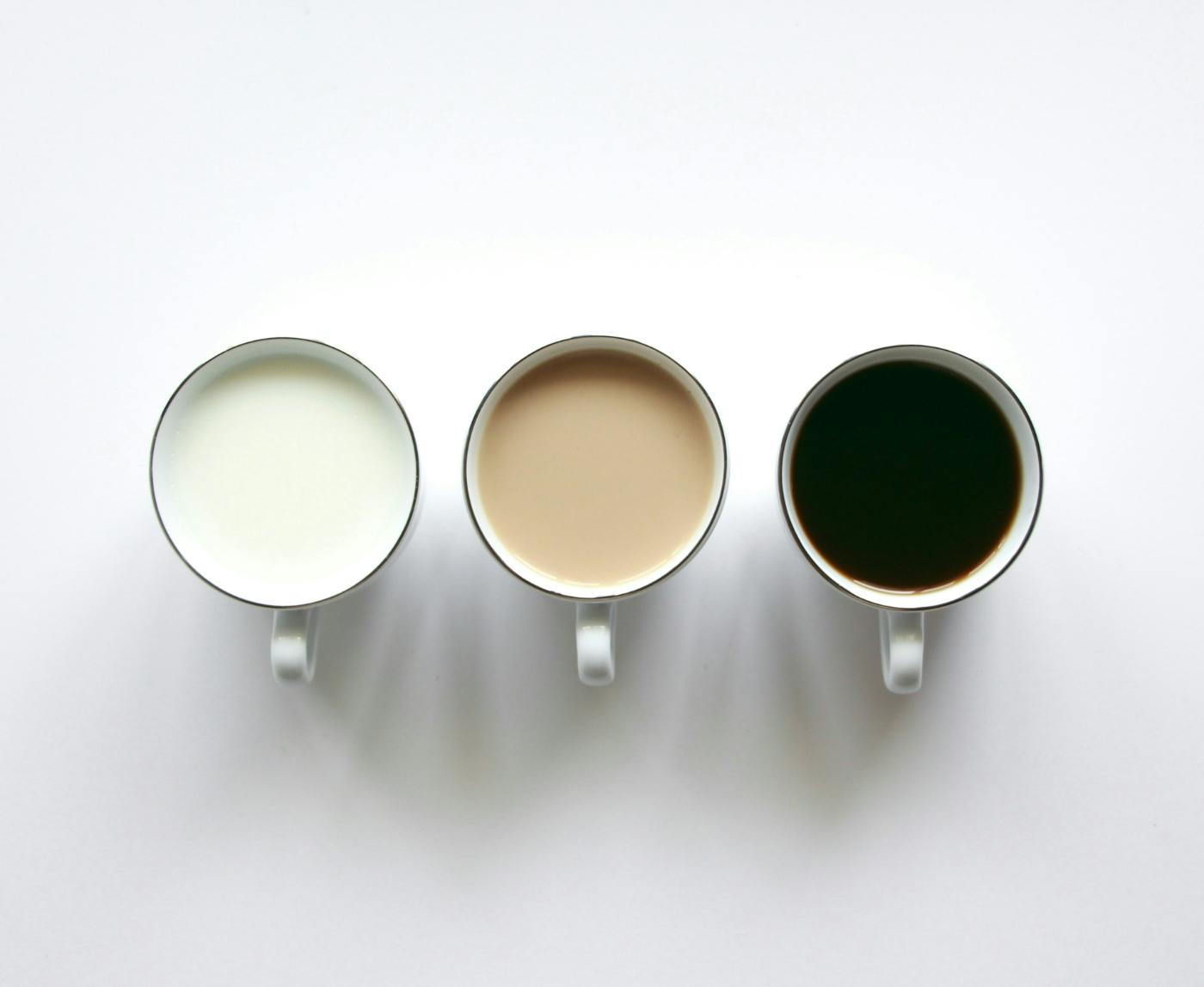
In a world where consumer choices are endless, sticking with a brand that clearly doesn’t offer the best experience seems counterintuitive.
In college, my roommates and I used to go to a place called Donnie’s Fried Chicken. I have no idea why it started, but it did, and then it became a part of our lives.
Here’s the thing: one guy, Avery, came into our lives and became a roommate after our long-time friend Arney left to go to a different college on the West Coast, leaving us with an empty bedroom and the need for a paying roommate. Along came Avery. Good guy, lots of energy, and lots of ideas.
On the first Sunday morning Avery lived with us, we woke to him making breakfast. Eggs and bacon, toast, the whole nine yards. As we sat and ate, slurping omelets and chugging coffee, Avery told us about Donnie’s Fried Chicken. When you went on a Saturday night and ordered the big bucket, I believe it was 25 pieces of chicken, you got a free case of two dozen eggs. “Great chicken and free eggs,” Avery said. “You get ’em comin’ and goin’.” We laughed, and still do to this day. I have no idea why. It wasn’t funny, but he was new and trying hard, so we laughed.
When Saturday evening rolled around, I went with Avery to Donnie’s to get the big bucket and our eggs. Now, the big bucket cost only 15 bucks, plus free eggs—that was Avery’s selling point. We got the bucket, got the eggs, and headed back home. At home, we sat around the table with beers and bourbon and dug into what Avery promised was the best fried chicken we’d ever eat.
First bite—crispy enough, kind of spicy flavor—but hold on, the chicken wasn’t fully cooked. After one night, you encountered blood and… raw chicken.
“Aw, this chicken is raw,” I said, expecting him to apologize, get angry, drive back, and demand the money back. You know, a normal reaction to putting a bucket of raw chicken down for your new roomies to eat. Instead, Avery said, “I know, they cook it so fast to keep up with the demand, sometimes…” and he shrugged. It was then that I noticed Avery was taking only one or two bites out of each piece of chicken. “If you eat around the raw parts, it’s good.”
This was, of course, insane advice. Not only did eating raw chicken open you up to diseases like Salmonella and Campylobacteriosis (the worst double date in history), but it was just gross. So, we all stopped eating and resolved never to go to Donnie’s again.
Wouldn’t that be great? If we all took our collective health seriously and stopped patronizing a food establishment to avoid death? Would that be wise? Yes, it would be. But did we do that? No, we didn’t. Because the following Saturday, there we were in line, getting the big bucket, the eggs, and heading home to take a bite of the undercooked chicken.
It became a joke, and when we had people over, we indoctrinated them into the ways of Donnie’s. And Sunday morning, we ate eggs, eggs, eggs.
Why did we do it? Laziness. Stupidity. Ignorance? I prefer to think of it as hopeful. We all hoped that one night we would bring the big bucket home, pour into it, and every single piece of chicken would be fully cooked, crispy, and flavorful. We lived in hope. We also almost died for that hope, we got very sick pursuing that hope, and we had friends who never came out of our place again due to that hope.
Despite the terrible chicken, we made Donnie’s part of our college life, and it just stayed. The whole “devil you know” thing popped up a few times, but mostly, it just became part of the routine. Saturday evening, if we were all home and had no plans, we went to Donnie’s. Terrible, but familiar and hilarious as well.
After college, I noticed this kind of behavior in my life and the lives of others, but it went beyond bad chicken. I discovered that brands do this to us all the time. They may serve us up a half-baked experience, but for some reason, we keep coming back. Whether it’s the familiarity, the absurd hope that it’ll get better, or simply the sheer force of habit, we become loyal to the most unlikely of choices. Think about Spirit Airlines and their history of cramped seats, outrageous fees, and questionable service. Or Crocs, the foam footwear that's laughed off as a fashion faux pas, yet continues to dominate the market. Much like our obsession with undercooked chicken, there’s a strange loyalty that thrives despite—or perhaps because of—flaws. So, why do we keep coming back? Is it brand loyalty… or Stockholm Syndrome?

The Psychology of Brand Loyalty: Why We Stick Around
In a world where consumer choices are endless, sticking with a brand that clearly doesn’t offer the best experience seems counterintuitive. Yet, the phenomenon of brand loyalty persists, often for the most unlikely of brands. Take Spirit Airlines—its reputation for poor service, hidden fees, and tiny seats doesn’t seem to scream “premium experience,” yet people flock to book flights with them. Similarly, Crocs, with its divisive design and initial status as a fashion faux pas, continues to thrive, with even the most reluctant customers owning a pair.
So, why do we keep coming back to brands that fail to impress or even leave us frustrated? One reason could be familiarity, a psychological principle known as the mere exposure effect. The more we are exposed to something, the more we tend to like it, even if it’s flawed. Brands like Spirit or Crocs become so ingrained in our daily lives that they become almost comforting, familiar, and even predictable. And in the case of Spirit Airlines, it’s a bit like knowing exactly where the potholes are on your daily commute. You might not like the ride, but it’s what you know.
Then, there’s the hope—a powerful emotional pull. Just like my roommates and I kept hoping that Donnie’s would somehow serve us a fully cooked, crispy bucket of chicken, consumers continue to invest in brands with the belief that things will get better, even when experience after experience tells them otherwise. Brands, intentionally or not, create a narrative of potential improvement—whether that’s a better flight, more comfortable seats, or a fresh new product update. The hope that “maybe next time will be different” keeps us coming back.
But this loyalty isn’t all about positive feelings. It’s also about habits—our brains are wired to follow routines, and many times, sticking with a familiar brand is simply easier than switching to something unknown. This can be especially true with brands like Crocs, which, despite its strange look, became a household name because of its practicality and comfort. Sure, it might not be everyone’s style, but it’s become a staple in the daily routine of many loyal customers.
As comforting as familiarity, hope, and routine can be, there's a darker side to brand loyalty—one that borders on emotional manipulation. When a brand capitalizes on our psychological tendencies, it can feel less like devotion and more like an unhealthy attachment. It’s not just about loyalty anymore; it can start to feel more like Stockholm Syndrome, where the relationship becomes one-sided, and we’re so invested that leaving feels almost impossible, even if it’s bad for us.
Stockholm Syndrome in Branding: When Loyalty Turns Toxic
We’ve all heard the phrase "loyal to a fault," and in some cases, it’s entirely fitting. Stockholm Syndrome—named after a 1973 bank robbery in Sweden where hostages began to feel empathy for their captors—describes a psychological phenomenon in which victims bond with their abusers over time. While it sounds extreme, this psychological principle can easily apply to brand loyalty. Brands that don’t treat customers well, yet manage to foster unwavering loyalty, may be leveraging the same emotional connection seen in Stockholm Syndrome.
Think of Spirit Airlines again. Despite its track record for poor service, hidden fees, and unreliable flights, people still choose to fly with them, sometimes without exploring alternatives. In a way, consumers have been "captured" by the brand's affordable ticket prices, despite the emotional and physical toll of cramped, uncomfortable flights. The brand’s initial attraction—cheap flights—becomes a controlling factor, where customers feel they must keep coming back, even if the experience is far from pleasant. It’s not just about affordability; it’s about the emotional bond that’s been created.
Similarly, Crocs managed to turn a joke of a product into an iconic piece of fashion. In the beginning, they were ridiculed, yet the brand made clever moves to capitalize on its quirky reputation. What was once a product of mockery became a badge of individuality for millions. People were devoted to the comfort and practicality of the footwear, despite its appearance. This devotion became stronger as the brand carved out a distinct space in people’s lives, almost like they were too deep into their relationship with the brand to walk away, even when the outside world questioned their choices.
The trap here is emotional attachment—when people start defending the brand’s flaws, making excuses for its shortcomings, and justifying their continued loyalty. The same way a hostage might justify their captor’s actions, consumers often find themselves justifying why they stay loyal to brands, even if they’re being mistreated or taken for granted. The emotional investment in the brand becomes so strong that it's no longer about product quality; it’s about a sense of belonging or even identity.

How Brands Foster Loyalty: Manipulation or Strategy?
The relationship between brand and consumer isn’t accidental. Brands, particularly those like Spirit Airlines and Crocs, actively cultivate loyalty through carefully crafted strategies that play on our emotions, psychology, and routines. Whether it’s through low-cost offerings, consistently mediocre experiences, or quasi-mythical product promises, brands know exactly how to keep their customers coming back.
Take Spirit Airlines—the brand uses a pricing strategy that lures in consumers with incredibly cheap fares. While the initial attraction is cost, it’s the experience that sticks. Spirit’s model keeps you coming back because of the sheer predictability of its low prices. You know it’s going to be uncomfortable, you know the fees will pile up, but you also know that you won’t be paying an arm and a leg for your ticket. Over time, this low-cost, consistent, and predictable approach creates a kind of tolerable discomfort that customers learn to accept as part of the deal. It’s a calculated move. By offering no-frills service at a ridiculously low price, Spirit builds a loyalty based on customers' willingness to endure inconvenience in exchange for affordability. The trade-off becomes normalized, even expected.
Similarly, Crocs’ strategy involved creating a product that stood out, not just in style but in comfort. The brand embraced the humor of its outlandish look and turned it into a signature feature. With each product launch, collaborations with designers, and celebrity endorsements, Crocs cemented its position as a cult favorite—a brand that doesn’t need to follow trends, because it creates its own. It’s comfort over convention, and that authenticity resonates with millions. Crocs intentionally plays on its “ugly but comfortable” reputation, turning what was once a laughingstock into a style statement. By leaning into their quirks and not attempting to change, Crocs turned a negative perception into one of the brand’s greatest assets.
In both cases, brands capitalize on our desire for consistency. Even when a product or experience isn’t perfect, consumers are often willing to forgive those imperfections when the overall experience remains familiar and predictable. But the key question is: Can these strategies remain effective long-term, or are they simply a way of maintaining customers who feel locked in?
The real question isn’t whether these strategies work in the short term—it’s whether they can endure. Are consumers truly loyal, or have these brands just successfully manipulated the psychological principles of hope, routine, and habit? And at what point does loyalty turn into resentment?
The Long-Term Gamble: Can These Brands Last?
When a brand thrives on the principles of low-cost, mediocre service, or quirky product designs that embrace imperfection, there’s a risk of burnout. Sustainability in branding doesn’t just mean holding on to loyal customers—it means adapting, evolving, and ensuring that the flaws that once felt familiar don’t become glaring liabilities.
With Spirit Airlines, the gamble is clear. The brand has carved out a niche, but at what cost? While it thrives on affordability, there's a growing tension in the travel industry. The rise of budget alternatives like Southwest Airlines, which offers low fares and better service, poses a direct challenge. Over time, consumers may start to wonder whether the trade-off between price and comfort is really worth it. Even Spirit’s most loyal passengers can only tolerate the lackluster service for so long. If Spirit doesn’t eventually improve its customer experience, it may find itself replaced by a competitor offering a better deal on comfort, making that loyal customer base a bit less dependable than the airline hopes.
Crocs, on the other hand, has found a way to maintain its success despite being a product of ridicule. The brand’s evolution—from a joke to a fashion statement—has been a success, but the challenge remains: how do you keep people interested once the novelty of “ugly chic” wears off? Crocs has used collaborations and limited-edition drops to keep the buzz alive, but how long can it remain the go-to choice for comfort without becoming, well, just another pair of shoes? While Crocs is currently thriving, it faces the same dilemma of saturation. The more it leans into its niche, the more it risks alienating new customers and stagnating among the diehard fans.
The sustainability of both brands depends on their ability to adapt without losing the essence of what made them popular in the first place. Spirit Airlines will need to find a way to address customer frustrations and still deliver on its promise of affordable travel, while Crocs will need to ensure that its “ugly” shoes stay relevant in a world where new trends are constantly emerging. Without adaptation, both brands risk becoming relics of their former selves, stuck in a place where they can no longer appeal to the next generation of consumers.
So, what happens when these brands hit a wall? How do they recover when consumers finally start seeing through the gimmicks? Let’s explore how some brands manage to turn things around and evolve in a way that keeps their loyal customers coming back, without falling into the trap of complacency.

Rebranding and Recovery: Evolving Without Losing Your Essence
There comes a time in every brand’s life cycle when it needs to reinvent itself to stay relevant, especially when the novelty starts to wear off, or when the flaws that were once charming become deal-breakers. The challenge is finding that balance between evolution and staying true to the brand’s core identity.
Take Apple, for example. Once known for being a niche, creative brand, it faced the challenge of reaching a broader audience without losing its artistic soul. Over the years, Apple’s rebranding efforts—especially with the iPod, iPhone, and MacBook—have allowed it to maintain its allure of being both innovative and premium while still broadening its consumer base. Apple didn’t abandon its roots; instead, it evolved its products to meet the changing needs of the market while keeping its identity intact. The key to Apple’s success was innovation, a constant push for better technology, and keeping their loyal following engaged with every new release.
For Crocs, staying relevant meant leaning into collaborations with high-profile brands like Balenciaga and Kanye West. This helped elevate its image from a practical product to a fashion statement, while still staying true to its comfort-first mentality. Crocs tapped into a niche market of fashion-forward, comfort-seeking customers, helping it continue to thrive even as new competitors entered the space. The brand’s success came from knowing when to innovate while maintaining the comfort and functionality that made it a fan favorite in the first place.
Spirit Airlines, however, has yet to experience a true rebranding moment. Its identity is so deeply tied to affordable, no-frills travel that improving its service without raising prices feels like a catch-22. If it doesn’t evolve, Spirit risks becoming irrelevant in a market where consumers are increasingly prioritizing both affordable fares and better service. However, rebranding is possible. By focusing on improved customer experience and transparency, Spirit could still maintain its loyal customer base while attracting more consumers who currently avoid the brand for its reputation.
Ultimately, rebranding is about redefining a brand’s promise while staying authentic to the core reason consumers were attracted to it in the first place. It’s a delicate dance between change and consistency, where brands need to evolve enough to stay relevant but not so much that they lose the loyal customers who’ve been with them through thick and thin. And when done right, this evolution can transform a struggling brand into a powerhouse that’s not only survived but thrived over time.
But the truth is, not all brands are able to make that successful leap. For some, their flaws become too glaring, their loyalty too entrenched, and their evolution too little, too late. So, what happens when brand loyalty and Stockholm Syndrome meet their inevitable breaking point? Let’s take a look at how some brands fail to recover—and why their loyal customers may leave.
When Loyalty Breaks Down: The Brands That Fail to Evolve
Not every brand that fosters deep loyalty is destined for success. In fact, many brands fail to evolve and, over time, lose touch with their consumers—even those who have stayed loyal for years. When a brand doesn’t adapt to changing consumer needs or market conditions, its flaws can eventually become insurmountable, even for its most dedicated followers.
Take Blackberry, for example. At its peak, Blackberry was synonymous with business communication and efficiency. But, as touchscreen technology and more user-friendly smartphones emerged, Blackberry failed to innovate in time. Its loyal customers—who once couldn’t live without the device—were left behind as the world moved on. Despite its dedicated fanbase, Blackberry’s refusal to adapt to changing consumer preferences and the advancement of technology meant that it eventually couldn’t keep up. Even the most loyal users had to abandon ship.
Similarly, Blockbuster once dominated the video rental market, but when Netflix introduced streaming, Blockbuster was slow to pivot. Its customers had already begun to embrace the convenience and immediacy of online streaming, while Blockbuster clung to its outdated model of renting physical DVDs. The loyal customer base couldn’t save it. Consumers weren’t just looking for video rentals anymore; they were looking for convenience and innovation, and Blockbuster couldn’t provide that. In the end, even the most loyal customers moved on, leaving Blockbuster to fade into irrelevance.
Spirit Airlines could very well face a similar fate if it doesn’t adapt. Despite its loyal following of budget-conscious travelers, the market is shifting toward companies that offer a better overall experience. The rise of more comfortable, affordable airlines like Southwest and JetBlue means that Spirit’s cheap fares can only take it so far. Consumers are growing weary of sacrificing comfort for savings, and loyalty can only carry a brand so far when the competition raises the bar.
Even Crocs—which has weathered many storms—may one day face a reckoning if it stops innovating. As long as the brand keeps collaborating with new designers, launching limited-edition drops, and staying ahead of trends, Crocs will thrive. But if the brand ever gets complacent, its devoted fans may abandon it for something newer or more in line with current trends. Loyalty is not a forever guarantee—it has to be nurtured and earned over time, and if a brand stops working for its fans, those fans may walk away.
The truth is, brand loyalty can be fragile. It’s not an unconditional commitment—it’s a relationship. And like any relationship, if one party doesn’t evolve, if one party doesn’t listen, the bond weakens. In some cases, customers will eventually see the flaws they’ve been ignoring for years and decide that it’s time to break free.
So, where does this leave us? For brands to survive in the long run, they must do more than just survive their flaws—they must actively grow and adapt. Whether it’s through rebranding, improving the customer experience, or making bold moves, brands must remember that loyalty isn’t something to take for granted. The real question is: How can brands keep their loyal customers while making sure they don’t get stuck in the past?

Summing Up: Brand Loyalty or Stockholm Syndrome?
Brand loyalty isn’t as simple as it seems. From raw chicken at Donnie’s to Spirit Airlines’ infamous flight experiences, we’re often drawn back to brands despite their flaws, whether it’s comfort, habit, or hope that next time will be better. These brands understand our psychology and leverage familiarity, routine, and hope to keep us coming back. But at what point does brand loyalty cross the line into something more akin to Stockholm Syndrome, where we’re so emotionally invested that we ignore the obvious flaws in the experience?
Brands like Crocs and Spirit Airlines have made a business out of delivering imperfect, yet predictable, products. They’ve created a world where consumers continue to return, sometimes for comfort, sometimes for novelty, and sometimes out of sheer habit. But while these strategies may work in the short term, they come with risks. Brands that don’t evolve can face eventual burnout, like Blockbuster and Blackberry, which failed to adapt to shifting consumer expectations. The loyalty these brands once enjoyed wasn’t enough to save them from irrelevance.
The lesson here is clear: Loyalty is earned, but it must be nurtured. Brands that ignore customer experience or become too complacent risk losing the very loyalty that made them successful in the first place. For a brand to thrive long-term, it must adapt, evolve, and keep innovating—without losing the essence that initially attracted consumers.
At ThoughtLab, we believe that building authentic connections with customers means constantly refining your brand to align with their evolving needs. True loyalty is built not on just delivering on promises, but by consistently surprising and delighting your customers, ensuring they never feel trapped in an unfulfilling relationship.

